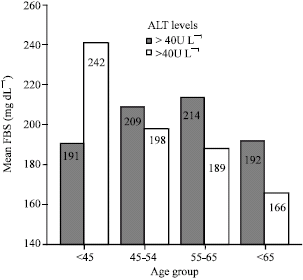Research Article
Prevalence of Abnormal Serum Alanine Aminotransferase Levels in Type 2 Diabetic Patients in Iran
Yazd Diabetes Research Center, Shaheed Sadoughi University of Medical Sciences and Health Services, Yazd, Iran
M. Afkhami-Ardekani
Yazd Diabetes Research Center, Shaheed Sadoughi University of Medical Sciences and Health Services, Yazd, Iran
M. Rashidi
Yazd Diabetes Research Center, Shaheed Sadoughi University of Medical Sciences and Health Services, Yazd, Iran











